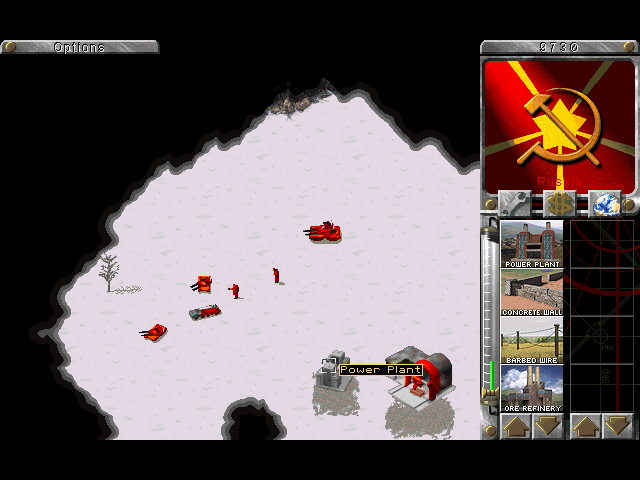
Command and Conquer: Red Alert
Written by: Rik
Date posted: February 10, 2004
- Genre: Strategy
- Developed by: Westwood Studios
- Published by: Virgin Interactive
- Year released: 1996
- Our score: 7
Westwood have had something of a critical battering of late: with the developer’s much-anticipated foray into the world of 3D RTS, Emperor: Battle for Dune, receiving a distinctly lukewarm reception that only served to heighten doubts about their ability to produce the very best. By all accounts, Tiberian Sun was somewhat disappointing, too, not to mention the half-arsed Dune 2 ‘remix’ that preceded it.
A far cry from winter 1996 then, when this little beauty emerged and found its way into every discerning gamer’s Christmas stocking. Dune 2 may have been the original RTS, but anyone who says they’d play it now is a liar. Admittedly, a copy of ‘vanilla’ C&C may still satisfy, but the extra tweaks, the pseudo-contemporary setting and the extra lick of paint make this the pick of the pre-Tiberian Sun bunch. Indeed, it’s no coincidence that Westwood’s only success story in recent years has been Red Alert‘s sequel, a pleasant surprise for all concerned, and a worthy follow-up for all the reasons just mentioned.
Recent literature on the subject of real-time strategy has stressed the new tactical dimension brought to the genre by market leaders Shogun, Ground Control and Homeworld, in doing so implying that games such as Red Alert were no more than a walk in the park, a simple matter of accumulating resources and crushing adversaries by virtue of numerical superiority. While there is more than a grain of truth in this assertion, a quick re-play of Red Alert reveals it to be anything but a chain of dull re-hashes of the same mission.
Red Alert is not the most taxing strategy game of all time. In fact, some would even dispute the use of the word ‘strategy’ – I mean, this is a title that was ported (and successfully) to the Playstation, ferchrissakes. And yes, there are times when it is just a matter of building as many tanks as you can afford, and then sending them to pummel your enemy’s base to the ground (construction yard first, then the war factory, then the barracks, as I seem to recall). But, on the whole, the missions are quite varied and well balanced, and more often than not you’ll be inclined to have another go rather than turn the damn thing off because it’s all getting too much.
In addition to the standard ‘build a base’ fare, there are a number of variations. Sea combat is given more of an outing, with the respective merits of the Allies’ array of battleships and the Soviets’ submarines making things rather interesting. More emphasis is placed on the smaller units this time around, too, with the Allies’ Tanya character able to run through infantry in a matter of seconds and destroy entire bases if you manage to keep her alive. The spy, a stealthy character that goes virtually undetected in the game (except by attack dogs, another cool feature) is also key to several of the missions, especially those set inside enemy bases.
Speaking of which, while the indoor missions were probably intended as an interesting diversion, they can be bloody irritating. At times it feels like trying to play a turn-based squad shooter (a la X-COM) in real time, which is quite tricky to say the least. By placing greater emphasis on a small and finite number of units, the indoor missions also highlight deficiencies in the C&C game engine. In the main game, losing the odd unit because of a pathfinding error doesn’t matter so much because they can be easily replaced, but on an indoor mission when your spies or engineers take the wrong route it can mean game over. At times (and this also applies to the Tanya missions), it just feels wrong to be moving single units about so much, further removing strategy elements from the game and making it feel like a point and click shooter.
Still, if it all gets too much, there’s always the skirmish mode, where you can pit yourself against a number of human or CPU opponents. Essentially this strips away most of the window-dressing (story, cut-scenes, etc.), to leave the basic C&C gameplay that we know so well. It’s good to know that there’s somewhere else for the single player/loner to turn once they’ve finished (or got hopelessly stuck on) the Allied and Soviet missions. And if you happen to like your RTS to be from the pile-em-high school, you’ll probably be much happier playing skirmish than the campaigns in any case.
Graphically, Red Alert doesn’t offend too much if you aren’t averse to cartoony 2D. The Windows version tidies things up significantly (although if you’re still only running DOS, and God help you if you are, then there’s a chunky-but-functional DOS version on the CD, too) although it does tend to make your units (especially infantry) look a little tiny at times. The carnage is accompanied by some great sound – there is some storming music, along with the usual explosion, gunfire and ‘yessir’ effects that make this sort of thing all the more enjoyable.
The video sequences are also passable, driving the story on and providing periodic breaks from the action. Okay, so they’re ridiculously over-the-top, quite obviously made on the cheap and feature some of the worst accents seen since ‘Allo ‘Allo, but they’re fun in a B-movie kind of way and more importantly serve as incentive enough to have a go at the next level. There’s nothing worse than spending hours hunched over your mouse to battle through a mission, only to be confronted with an even harder-looking one straight away.
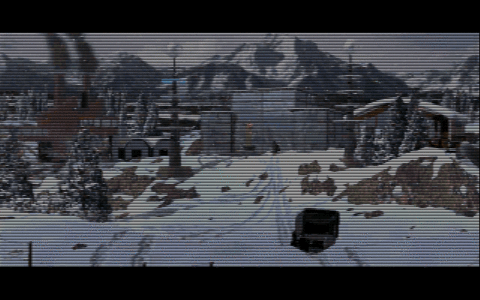
Who can forget the distinctive sound of a tesla coil, taking a second to warm up before reducing intruders to a pile of smouldering ash? Ah, the memories…
The plot, by the way, is ridiculous: Albert Einstein invents a time machine, visits the 1920s and murders Hitler, thus avoiding World War II, with the unfortunate result that Stalin?s armies then rampage through Europe. So, as if you needed it pointing out to you (although the game’s introduction movie hammers it home), the Soviets are the, er, “Red” that has the rest of Europe on (cough) “Alert”. We never find out why no-one thought of using the time machine to go back and bump off Stalin, but then I suppose it wouldn’t be much of a game then, would it? And while I’m being a bit of a smug twat, I may as well point out that Stalin died in 1953 (aged 73), long before the technological warfare depicted in the game would have been possible.
Ahem. At the end of the day, Red Alert has aged rather better than one might expect. It was once the best, and now it doesn’t even come close, but that’s not to say it doesn’t serve as a piece of entertainment any more. The more tactically minded on a budget may find Total Annihilation (or Homeworld if they’ve got the hardware) more fulfilling, but Red Alert gets my vote, if only because the storyline in TA is marginally less interesting than a plate of boiled potatoes. In conclusion then – oh, what’s the point? You’ve probably all got it anyway.

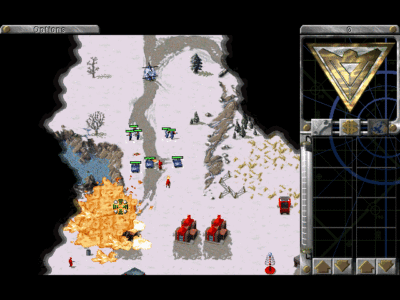
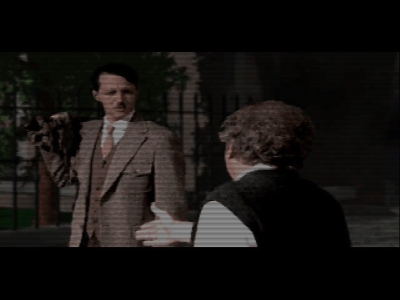
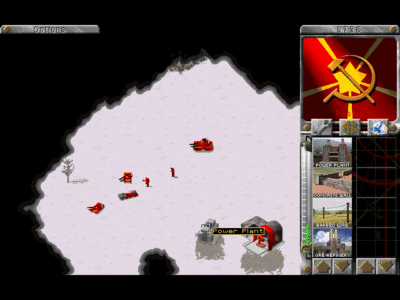

 Posts
Posts